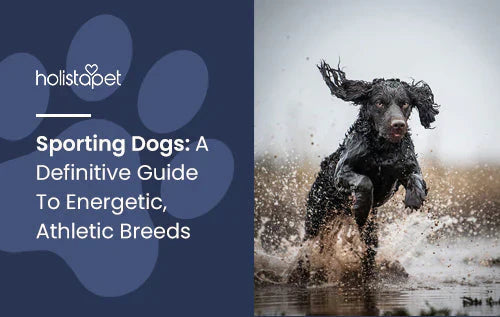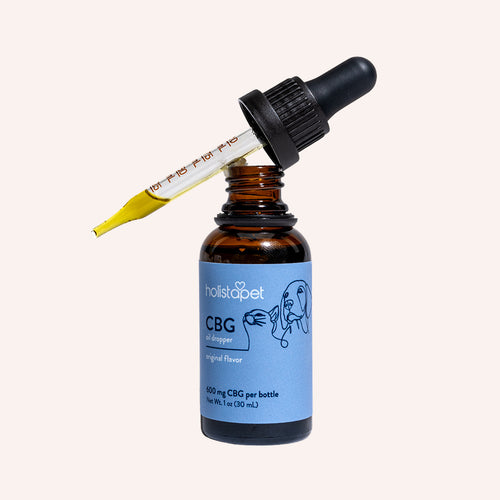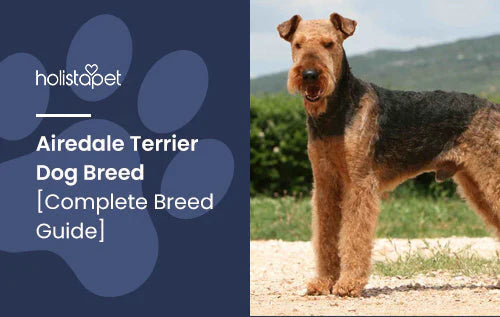Sporting dogs are bred and raised to perform hunting-related tasks for their human companions. However, not all sporting dogs are created equal, as some are bred for tasks that others simply can't do. Some sporting dogs point to where prey is, so their hunter companions know exactly where to look. Others strictly retrieve the prey after the kill.
Sporting dogs are friendly and easy to train. It's no surprise that this group includes some of the most common dog breeds that live in family homes in the United States. Because of this, sporting dogs are also favored for their ability to work and train as service dogs.
What Is a Sporting Dog?
Some people refer to sporting dogs as "bird" dogs or "gun" dogs. These nicknames refer to three of four subgroups (more on the subgroups below). Pointers, Spaniels, and Retrievers are typically held in high esteem for their methods of flushing out and retrieving waterfowl.
Many characteristics make this dog breed group serious threats to the animals they hunt and ideal for their respective tasks. Several breeds in the sporting dog group are equipped with special webbed feet and water-resistant coats. This makes them extremely well-suited for chasing down, attacking, and retrieving game even in watery terrain.
In addition, their friendly nature makes them perfect for families with children. In the sporting group, dogs are divided into four basic categories according to the type of job each was bred to perform. There are four subcategories of sporting dogs that fall within this group:
Setters

Over the years, these dogs have been bred to find game by scent, work the field, and freeze in position to show the hunter where he might locate birds. The American Kennel Club's setters are the Irish Setter, Irish Red & White Setter, the Gordon Setter, and the English Setter.
Pointers
These dogs find game by scent, similar to setters, but they freeze in a standing position and "point" to the targeted game instead of laying down. The pointers in The American Kennel Club sporting group are the German Wirehaired Pointer, German Shorthaired Pointer, and (surprisingly) the Classic Pointer.
Retrievers

These dogs bring the downed game back to the hunter, which may (and often does) include diving into the water where the game may have landed. The American Kennel Club officially recognizes the Golden Retriever, the Flat-Coated Retriever, the Chesapeake Bay Retriever, the Curly-Coated Retriever, the Nova Scotia Duck Tolling Retriever, and the Labrador Retriever.
Spaniels
These dogs are wonderful when it comes to helping flush out game from the brush. The spaniels recognized by The American Kennel Club are:
- Brittany Spaniel
- Boykin Spaniel
- American Water Spaniel
- English Cocker Spaniel
- Field Spaniel
- Welsh Springer Spaniel
- Irish Water Spaniel
- Clumber Spaniel
- Cocker Spaniel (American)
- English Springer Spaniel
- Sussex Spaniel
How Many Sporting Dog Breeds Are There?
The American Kennel Club recognizes 32 breeds in the sporting dog group. However, the most well-known among their ranks are the Labrador Retriever and the Golden Retriever.
Are Sporting Dogs Easy to Care For?
The level of difficulty you might experience when caring for a sporting dog will vary depending on the breed. It is important to remember that all sporting dogs require regular exercise and a proper diet for your dog that provides adequate energy.
For an example of a low-maintenance sporting dog, we love the beautiful (and conveniently odorless) Vizsla. A truly wash-and-wear hunting dog with a sweet disposition, the Vizsla also happens to be a light shedder that doesn't drool. They do require a lot of exercise like other sporting dogs.
On the other hand, some sporting dogs are a bit more high-maintenance, requiring lots of time and energy to care for. Few breeds demand their owner's attention and energy more than the German Shorthaired Pointer. As a result, they often require plenty of training and daily heart-pumping exercise sessions to keep them under control.
Do Sporting Dogs Require a Special Diet?
Adequate energy is the primary nutritional concern when it comes to sporting dogs. A well-balanced diet containing the appropriate amounts of micronutrients, fat, carbohydrates, protein, and fiber is essential to meet a sporting dog's energy requirements.
Most Popular Sporting Dog Breeds
The sporting dog group captures some of the world's most popular dog breeds, likely due to these dogs' stellar personalities and the fact that they come in every shape and size. So many of these breeds have lived as companions to humans for centuries, which is why there's no wonder why we've kept them around for so long. Sporting dogs serve many different purposes and come from all over the world!
Labrador Retriever

If anyone ever tries to claim that the Labrador Retriever is from the Labrador Peninsula in eastern Canada, you can tell them they're wrong! Labradors actually come from the island of Newfoundland. Its ancestors include the St. Hubert's Hound, the Newfoundland, and various other European pointer breeds.
The Labrador was originally used to pull and retrieve fishing nets out of the water for fishers. When it was introduced to England in the 1800s, this breed's already fantastic retrieving instincts were even further refined.
Today, the Labrador is one of the classic all-American hounds, often used as service dogs. Labradors are also occasionally used by the police as drug-sniffing dogs. The two primary varieties include the American Lab (taller and lankier) and the English Lab (more thickly built.)
Golden Retriever
Like other modern marvels (such as the telephone, the refrigerator, and the television), the Golden Retriever originated in Scotland. Many believe the breed has come from an original cross between a yellow-colored Retriever and the Tweed Water Spaniel. The puppies from this mix were later bred with a variety of other sporting dogs. Today, popular Golden Retriever hybrids include:
- The Goldendoodle (Golden Retriever and Poodle mix)
- The Golden Labrador (Black Labrador and Golden Retriever mix)
- The Golden Pyrenees (Golden Retriever and Great Pyrenees mix)
German Shorthaired Pointer
This sporting dog breed was originally trained as a hunting companion, made to hunt both in water and on land. This is why a German Shorthaired Pointer will not hesitate to jump in the ocean, a lake, or river for a swim.
The German Shorthaired Pointer has alert eyes, an elongated body, and a pair of long floppy ears that are simply too easy to fall in love with. However, these hunting hounds tend to shed pretty heavily and require weekly grooming (unless you want your house to turn into one giant furball).
This German breed resulted from the crossbreeding of several fine hunting dogs by German hunters. Its clearest descendant is the Old Spanish Pointer, and its lineage may also include the English Pointer, French and Scandinavian breeds, and the foxhound. These breeding efforts produced a dog that hunts well — whether on water or land — with little training.
American Cocker Spaniel

These all-American hunting hounds have developed a reputation for themselves as loving family pets. However, if they don't get an adequate amount of exercise, they can be stubborn and downright destructive.
A mischievous but lovable little scamp, The American Cocker Spaniel will push their limits to see exactly how much they can get away with. Consistent training and a firm (but loving) hand are advised when training American Cocker Spaniel puppies.
This sporting dog breed is a great playmate for kids but supervision is recommended. You will always want someone watching them to make sure that roughhousing doesn't get out of hand.
Vizsla
This versatile breed has been bred for hunting, though that's not all they have to offer. When it comes to hunting, they can track down small game like rabbits and birds easily. They excel when their agility is put to the test and do quite well in the show ring.
Due to their expressive and telling facial expressions, the Vizsla is relatively easy to communicate with. In addition, the Vizsla maintains high loyalty toward their human family members and is eager to please them.
Brittany
The Brittany Spaniel has its origins in the Brittany province of France, hence the name. However, this quick little breed goes back to the 19th century and likely descends from the Orange & White Setter. Today the Brittany is a popular pet as well as a fantastic hunting dog.
This breed tends to have light bodies and long legs, making them extremely agile and quick. While some Brittanys are born without tails, they all can cover ground as quickly as they need to. This trait has solidified the Brittany as one of the most popular hunting breeds available.
The Brittany dog is a playful, rambunctious, and curious little rascal, which can often be quite a handful. However, despite whatever minor inconveniences their energy might cause during the training process, they are fantastic with children. They can very quickly become amazing family pets with daily exercise and proper training.
Weimaraner

These larger-than-average working-class hounds were originally bred and developed to help hunters hunt down game. As a result, they can pay closer attention to what is happening all around them with their side-set eyes.
The Weimaraner is a gentle giant of a dog who loves to play with children but means business when it comes to working. They learn quickly and can get bored easily. You might benefit from varying their training and daily activities to keep them engaged.
Related Post: Appenzeller Sennenhund: [Herding & Sporting Dog]
What Is the Smallest Dog in the Sporting Breed Group?
The smallest member of the American Kennel Club's retrievers is the Nova Scotia Duck Tolling Retriever (sometimes referred to as the Toller). It is an affectionate, eager to please, and intelligent canine companion. Try to play fetch with a tireless Nova Scotia Duck Tolling Retriever at your own risk. Even if you play until your right arm falls off, they might ask you to throw left-handed!
This compact sporting dog with the big name is the smallest AKC retriever, standing between roughly 18 and 19 inches at the shoulder. The energetic little gundog's trademark is a coat of stunning crimson. Colors range from a dark coppery color to a beautiful golden red, with white markings.
Tollers are upbeat athletes who require constant physical outlets for their limitless stamina and vigor. These dogs enjoy camping, hiking, and hunting. Their webbed feet make them ideally suited for swimming. We recommend these red tornadoes to those with the time and energy to keep them usefully occupied.
Final Thoughts - Sporting Dogs
Sporting dogs come in a spectrum of sizes, shapes, and personalities but they all have one thing in common: substantially high energy levels. Consider adopting a sporting dog breed only if you have the time and energy for hikes, walks, and daily outside playtime.
We believe that hunters will find any breed listed in this article to be suitable for their sport. Given a choice, what would be your favorite sporting dog breed, and why? Let us know in the comments section!


 CBD Oil for Dogs - Fast Acting
CBD Oil for Dogs - Fast Acting
 Chicken Flavored CBD Oil For Dogs - Easy Dose
Chicken Flavored CBD Oil For Dogs - Easy Dose
 Salmon Flavored CBD Oil For Dogs - Highly Rated
Salmon Flavored CBD Oil For Dogs - Highly Rated
 CBG Oil for Dogs and Cats - Loved by Thousands
CBG Oil for Dogs and Cats - Loved by Thousands


![Wirehaired Pointing Griffon [Full Dog Breed Guide]](http://www.holistapet.com/cdn/shop/articles/190_d2fa4657-f6a5-4f13-8d8b-46a3e8f90122.jpg?v=1738275734&width=500)


Leave a comment
All comments are moderated before being published.
This site is protected by hCaptcha and the hCaptcha Privacy Policy and Terms of Service apply.